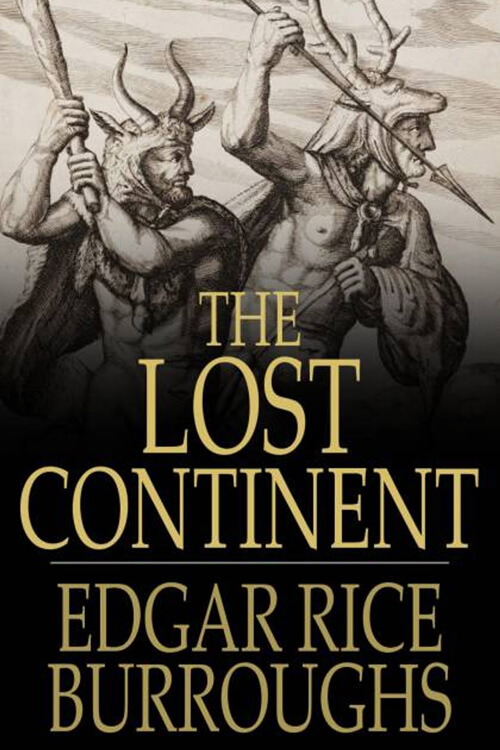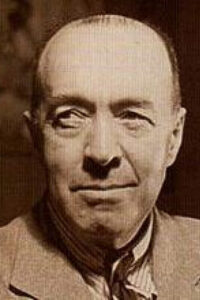
The Lost Continent
Since my earliest childhood, I have been strangely fascinated by the mystery surrounding the history of the last days of twentieth-century Europe. My interest is keenest, perhaps, not so much about known facts as to speculation upon the unknowable of the two centuries that have rolled by since human intercourse between the Western and Eastern Hemispheres ceased—the mystery of Europe’s state following the termination of the Great War—provided, of course, that the war had been terminated.
From out of the meagerness of our censored histories we learned that for fifteen years after the cessation of diplomatic relations between the United States of North America and the belligerent nations of the Old World, news of more or less doubtful authenticity filtered, from time to time, into the Western Hemisphere from the Eastern.
Then came the fruition of that historic propaganda which is best described by its slogan: “The East for the East— the West for the West,” and all further intercourse was stopped by statute.
Even before this, transoceanic commerce had practically ceased, owing to the perils and hazards of the mine-strewn waters of both the Atlantic and Pacific Oceans. Just when submarine activities ended we do not know but the last vessel of this type sighted by a Pan-American merchantman was the huge Q 138, which discharged twenty-nine torpedoes at a Brazilian tank steamer off the Bermudas in the fall of 1972. A heavy sea and the excellent seamanship of the master of the Brazilian permitted the Pan-American to escape and report this last of a long series of outrages upon our commerce. God alone knows how many hundreds of our ancient ships fell prey to the roving steel sharks of blood-frenzied Europe. Countless were the vessels and men that passed over our eastern and western horizons never to return; but whether they met their fates before the belching tubes of submarines or among the aimlessly drifting minefields, no man lived to tell.
Read or download Book
Edgar Rice Burroughs
Edgar Rice Burroughs (September 1, 1875 – March 19, 1950) was an American writer, best known for his prolific output in the adventure, science fiction, and fantasy genres. Best known for creating the characters Tarzan and John Carter, he also wrote the Pellucidar series, the Amtor series, and the Caspak trilogy. Tarzan was immediately popular, and Burroughs capitalized on it in every possible way, including a syndicated Tarzan comic strip, films, and merchandise. Tarzan remains one of the most successful fictional characters to this day and is a cultural icon. Burroughs’s California ranch is now the center of the Tarzana neighborhood in Los Angeles, named after the character. Burroughs was an explicit supporter of eugenics and scientific racism in both his fiction and nonfiction; Tarzan was meant to reflect these concepts.
Biography
Burroughs was born on September 1, 1875, in Chicago (he later lived for many years in the suburb of Oak Park), the fourth son of Major George Tyler Burroughs, a businessman, and Civil War veteran, and his wife, Mary Evaline (Zieger) Burroughs. His middle name is from his paternal grandmother, Mary Coleman Rice Burroughs. Burroughs was of almost entirely English ancestry, with a family line that had been in North America since the Colonial era. Through his Rice grandmother, Burroughs was descended from settler Edmund Rice, one of the English Puritans who moved to Massachusetts Bay Colony in the early 17th century. He once remarked: “I can trace my ancestry back to Deacon Edmund Rice.”
The Burroughs side of the family was also of English origin, having emigrated to Massachusetts around the same time. Many of his ancestors fought in the American Revolution. Some of his ancestors settled in Virginia during the colonial period, and Burroughs often emphasized his connection with that side of his family, seeing it as romantic and warlike. Burroughs was educated at several local schools. He then attended Phillips Academy, in Andover, Massachusetts, and then the Michigan Military Academy. After graduating in 1895, but failing the entrance exam for the United States Military Academy at West Point, he instead became an enlisted soldier with the 7th U.S. Cavalry in Fort Grant, Arizona Territory. After being diagnosed with a heart problem and thus ineligible to serve, he was discharged in 1897.
After his discharge, Burroughs worked at several different jobs. During the Chicago influenza epidemic of 1891, he spent half a year at his brother’s ranch on the Raft River in Idaho, as a cowboy, drifted somewhat afterward, then worked at his father’s Chicago battery factory in 1899, marrying his childhood sweetheart, Emma Hulbert (1876–1944), in January 1900. In 1903, Burroughs joined his brothers, Yale graduates George and Harry, who were, by then, prominent Pocatello area ranchers in southern Idaho, and partners in the Sweetser-Burroughs Mining Company, where he took on managing their ill-fated Snake River gold dredge, a classic bucket-line dredge. The Burroughs brothers were also the sixth cousins, once removed, of famed miner Kate Rice who, in 1914, became the first female prospector in the Canadian North. Journalist and publisher C. Allen Thorndike Rice was also his third cousin. When the new mine proved unsuccessful, the brothers secured for Burroughs a position with the Oregon Short Line Railroad in Salt Lake City. Burroughs resigned from the railroad in October 1904.
Later life
By 1911, around age 36, after seven years of low wages as a pencil-sharpener wholesaler, Burroughs began to write fiction. By this time, Emma and he had two children, Joan (1908–1972), and Hulbert (1909–1991). During this period, he had copious spare time and began reading pulp fiction magazines. In 1929, he recalled thinking that:
“[…] if people were paid for writing rot such as I read in some of those magazines, that I could write stories just as rotten. Although I had never written a story, I knew absolutely that I could write stories just as entertaining and probably a whole lot more so than any I chanced to read in those magazines.”
In 1913, Burroughs and Emma had their third and last child, John Coleman Burroughs (1913–1979), later known for his illustrations of his father’s books. In the 1920s, Burroughs became a pilot, purchased a Security Airster S-1, and encouraged his family to learn to fly. Daughter Joan married Tarzan film actor James Pierce. She starred with her husband as the voice of Jane, during 1932–1934 for the Tarzan radio series. Burroughs divorced Emma in 1934, and, in 1935, married the former actress Florence Gilbert Dearholt, who was the former wife of his friend (who was then himself remarrying), Ashton Dearholt, with whom he had co-founded Burroughs-Tarzan Enterprises while filming The New Adventures of Tarzan. Burroughs adopted the Dearholts’ two children. He and Florence divorced in 1942.
Burroughs was in his late 60s and was in Honolulu at the time of the Japanese attack on Pearl Harbor. Despite his age, he applied for and received permission to become a war correspondent, becoming one of the oldest U.S. war correspondents during World War II. This period of his life is mentioned in William Brinkley’s bestselling novel Don’t Go Near the Water.






